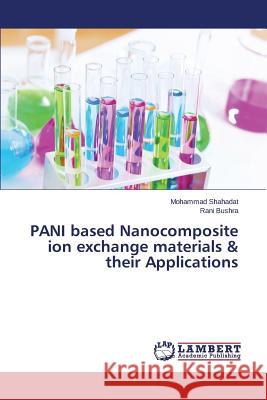PANI based Nanocomposite ion exchange materials & their Applications » książka
PANI based Nanocomposite ion exchange materials & their Applications
ISBN-13: 9783659554674 / Angielski / Miękka / 2014 / 104 str.
This book explains synthesis and characterizations of PANI based nanocomposite materials and their significant applications in various fields including treatments of industrial effluents. Three types of nanocomposites namely; PANI-Ti(IV)W, PANI-Ti(IV)As and PANI-Zr(IV)S were synthesized by using very simple chemical route. The experimental conditions, including mixing volume ratio of reactants, pH and temperature were established for their synthesis. The nanocomposites showed improved conducting behavior, higher ion uptake capacity along with chemical and thermal stability. On the basis of Kd values these materials were found to be selective for toxic heavy metal ions. Besides ion exchangers, these nanocomposite materials can be used as photocatalyst and antimicrobial agent as well as conducting material. These nanocomposites do not only create alternative to design novel materials, but they also develop innovative industrial applications. In future, it is expected, PANI based hybrid nanomaterials will open a new approach to demonstrate outstanding applications in diverse fields.
This book explains synthesis and characterizations of PANI based nanocomposite materials and their significant applications in various fields including treatments of industrial effluents. Three types of nanocomposites namely; PANI-Ti(IV)W, PANI-Ti(IV)As and PANI-Zr(IV)S were synthesized by using very simple chemical route. The experimental conditions, including mixing volume ratio of reactants, pH and temperature were established for their synthesis. The nanocomposites showed improved conducting behavior, higher ion uptake capacity along with chemical and thermal stability. On the basis of Kd values these materials were found to be selective for toxic heavy metal ions. Besides ion exchangers, these nanocomposite materials can be used as photocatalyst and antimicrobial agent as well as conducting material. These nanocomposites do not only create alternative to design novel materials, but they also develop innovative industrial applications. In future, it is expected, PANI based hybrid nanomaterials will open a new approach to demonstrate outstanding applications in diverse fields.











